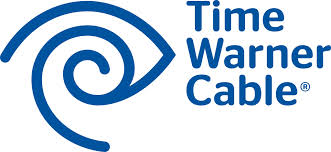Visual Storytelling Brings Diversity to Life
How TWC Uses Content Creation To Tell Employee Stories
By Andy Benton, Executive Producer, Content Creation
Storytelling. It’s a word used quite a bit in communications. When utilized properly at it’s essence, it delivers a connection and an impact that written reports, presentations, or even slick advertisements can’t produce.
When Time Warner Cable, a company of 50,000 + employees, wanted to tell the story of how our company recognizes “National Disability Employment Awareness Month,” I knew I would only need one special person who you will meet.
I work in TWC’s Content Creation team in our Communications Department. I help deliver company messages, both internally and externally, through original video stories.
Diversity and Inclusion is a large part of Time Warner Cable’s identity as a company. Everyone is welcome. But the concept is not always the easiest to convey to people in an engaging/entertaining medium. How does that translate to a short video?
My goal was to show and convey the feeling for D & I, not get caught up in statistics and company talking points. We needed someone who is living proof of the concept, not a prepared list.
Our HR people across the company footprint helped identify an employee, Ray Kawasaki. What struck me most hearing about him were not his physical disabilities, but how his spirit infects those around him. “You just have to meet Ray,” that was the common theme.
I set out to do just that and boarded a plane to Colorado Springs. And while I knew of the obstacles Ray has overcome, I had not spoken to him personally.
As silly as it may sound, preparation can sometimes get in the way of a good story. Of course I knew Ray’s backstory and that he perfectly fit the profile to tell a story about employees working with disabilities, but I wanted the first time I heard his story to be on camera. There were basic questions, but the ones that really brought out the personality of the man were in the natural follow up while hearing him speak. The idea here being to let the viewer feel they are part of the discovery while it is happening.
I met a wonderful, upfront and upbeat employee in Ray. He didn’t mind probing questions. My approach was light hearted, but honest. Respectful, but inquiring. And there was the most important element for telling a story, I listened.
Ray and I talked before the camera went on. He had a great sense of humor about life and his own limitations, so my first question/statement to him on video literally was, “Boy, you’re a mess, aren’t you?” Ray laughed and away we went.
He told me about his condition, the obstacles he has overcome. He was so matter-of-fact about it, I often repeated questions for emphasis wanting to draw out his personality and love for life.
In the video, this allowed me to establish him as a likeable person. This was backed up by kind words on camera from his co-workers. Now, when the time comes to sing the praises of Time Warner Cable in the story, viewers will already feel great about our subject and feel the words about his employer are genuine, not force fed lines about how great TWC is to work for.
This can be tricky because the idea is to showcase our company and it’s commitment to diversity, feeling good about Time Warner Cable. My approach is a little different. People don’t like being told how to feel, so don’t do that. Let them discover it on their own, just lead them there.
It may seem odd to hear a communicator saying don’t worry about facts and figures. But when showing impact through an individual’s emotional story, that’s exactly the way to go, at least with video.
Those wonderful factoids about our company and D & I mission were put in separate articles that accompanied the video in both internal and external formats.
Does the approach work? Well, one beautiful part about video, it is out there for all to see. It’s a click away on this page.
One final thought, I subscribe to the approach of “you never know who may be seeing your story.” This held true once again. In the “comments” section for the story, there was a remark from Rob Marcus, President and CEO of Time Warner Cable. You know you’ve made an impact when the head of the company takes time comment.
It said, “Ray….Thanks for inspiring all of us to be the best we can be.” The most important part of that sentence to me? Nowhere does it mention the production value, editing, lighting, shot selection or any of the nuances of producing a video. It is a comment about the emotion/impact the subject made. From a technical/creative side, I got out of the way and let Ray tell his story. For me, that is the ultimate goal of storytelling.
Read more on Untangled.





